It's a wild, wild world!
A cheeky Arctic fox slinking through the stark white landscape after stealing an egg from a snow goose nest to a seahorse clutching an earbud, these are the finalists of the 2017 Wildlife Photographer of the Year competition.
Over 50,000 photographs from 92 countries were entered into the esteemed competition, just 100 making the final exhibition which returns to the Natural History Museum on 20 October.
Overall winners will be announced on October 17, with the exhibition opening on October 20 at London’s Natural History Museum and running until spring 2018.
(To view the images in full-screen, please click on the photographs)
Saved but caged
Steve Winter, USA
Finalist 2017, The Wildlife Photojournalist Award: Single Image

A back leg of this six-month-old Sumatran tiger cub was so badly mangled by a snare that it had to be amputated. He was lucky to survive at all, having been trapped for four days before being discovered in a rainforest in Aceh Province on the Indonesian island of Sumatra. Anti-poaching forest patrols are helping to stem the killing, partly by locating and removing snares (now illegal), which is how this cub came to be rescued. The cub, however, will spend the rest of his life in a cage in a Javan zoo. Today, there are probably more Sumatran tigers in zoos than there are left in the wild.
Photograph: Steve Winter/Wildlife Photographer of the Year
Bear hug
Ashleigh Scully, USA
Finalist 2017, Young Wildlife Photographer of the Year, 11-14 Years
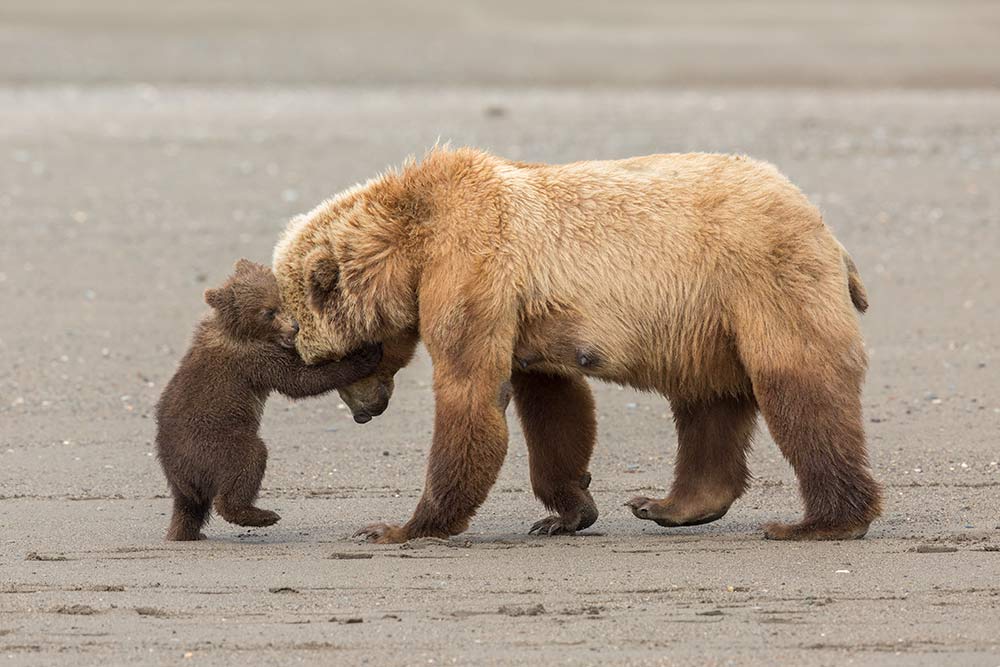
After fishing for clams at low tide, this mother brown bear was leading her young spring cubs back across the beach to the nearby meadow. But one young cub just wanted to stay and play. It was the moment Ashleigh had been waiting for. This young cub seemed to think that it was big enough to wrestle mum to the sand. As always, she played along, firm, but patient.’ The result is a cameo of brown bear family life.
Photograph: Ashleigh Scully/Wildlife Photographer of the Year
Swim gym
Laurent Ballesta, France
Finalist 2017, Behaviour: Mammals

'We were still a few metres from the surface, when I heard the strange noises,’ says Laurent. Suspecting Weddell seals -- known for their repertoire of at least 34 different underwater call types -- he approached slowly. It was early spring in east Antarctica, and a mother was introducing her pup to the icy water. The world’s most southerly breeding mammal, a Weddell seal gives birth on the ice and takes her pup swimming after a week or two. The pair, unbothered by Laurent’s presence, slid effortlessly between the sheets of the frozen labyrinth. 'They looked so at ease, where I felt so inappropriate,’ says Laurent. Relying on light through the ice above, he captured the curious gaze of the pup, the arc of its body mirroring that of its watchful mother.
Photograph: Laurent Ballesta/Wildlife Photographer of the Year
Romance among the angels
Andrey Narchuk, Russia
Finalist 2017, Behaviour: Invertebrates
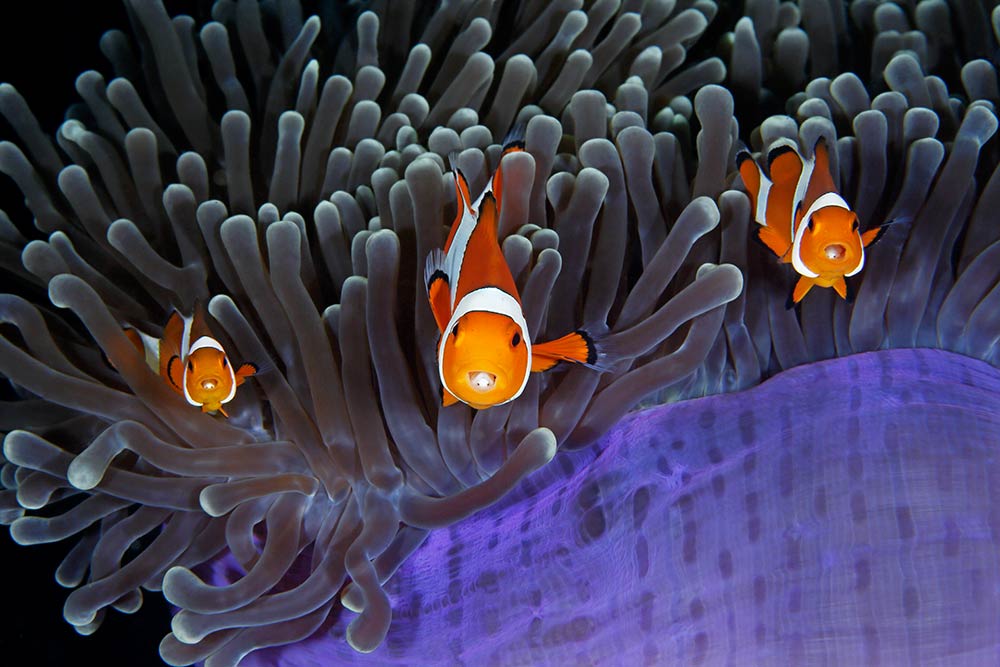
Andrey was on an expedition to the Sea of Okhotsk in the Russian Far East, and his intention on this day was to photograph salmon. But as soon as he jumped into the water, he found himself surrounded by thousands of mating sea angels.
Sea angels are molluscs related to slugs and snails, without shells and with wing-like lobes used as swimming paddles. To photograph them mating, Andrey had to battle against strong currents and avoid a wall of gill netting, and when he was swept into the net and his equipment became snared, he was forced to make an emergency ascent – but not before he had got his shot.
Photograph: Andrey Narchuk/Wildlife Photographer of the Year
Sewage surfer
Justin Hofman, USA
Finalist 2017, The Wildlife Photojournalist Award: Single Image

Seahorses hitch rides on the currents by grabbing floating objects such as seaweed with their delicate prehensile tails. Justin watched with delight as this tiny estuary seahorse 'almost hopped’ from one bit of bouncing natural debris to the next, bobbing around near the surface on a reef near Sumbawa Island, Indonesia. But as the tide started to come in, the mood changed.
The seahorse let go of a piece of seagrass and seized a long, wispy piece of clear plastic. As a brisk wind at the surface picked up, making conditions bumpier, the seahorse took advantage of something that offered a more stable raft: a waterlogged plastic cottonbud.
Photograph: Justin Hofman/Wildlife Photographer of the Year
Bold eagle
Klaus Nigge, Germany
Finalist 2017, Animal Portraits
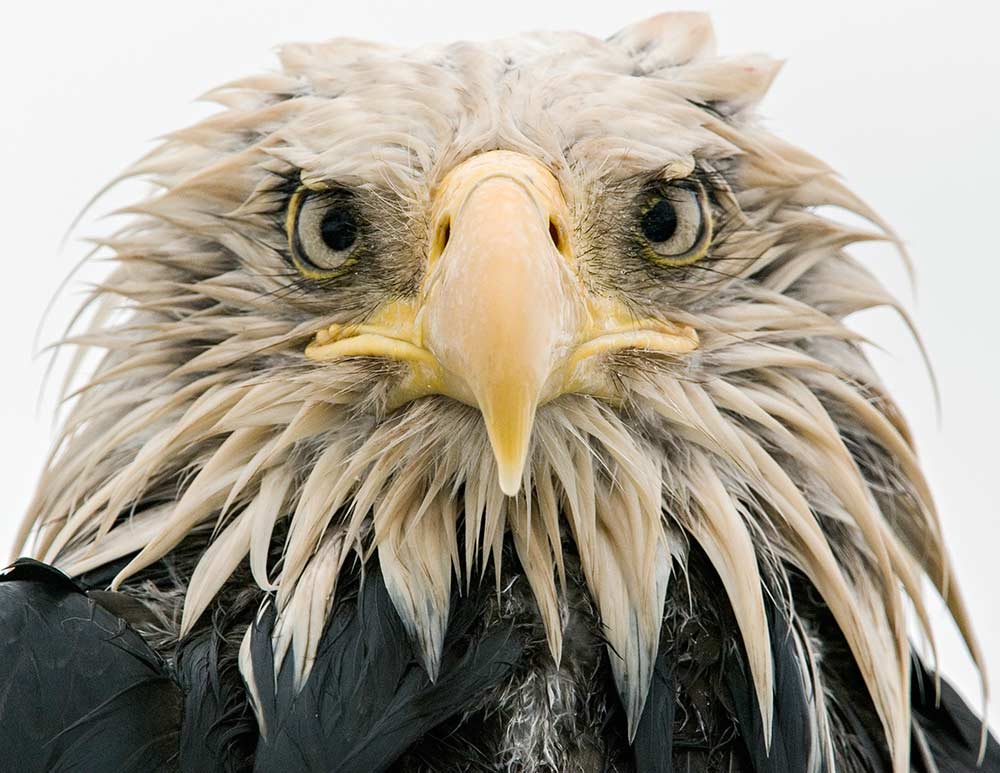
After several days of constant rain, the bald eagle was soaked to the skin. Named after its conspicuous but fully-feathered white head (bald derives from an old word for white), it is an opportunist, eating various prey -- captured, scavenged or stolen -- with a preference for fish.
'As the eagle edged nearer, picking up scraps, I lowered my head,’ says Klaus, 'looking through the camera to avoid direct eye contact.’ It came so close that it towered over him.
Photograph: Klaus Nigge/Wildlife Photographer of the Year
Resplendent delivery
Tyohar Kastiel, Israel
Finalist 2017, Behaviour: Birds
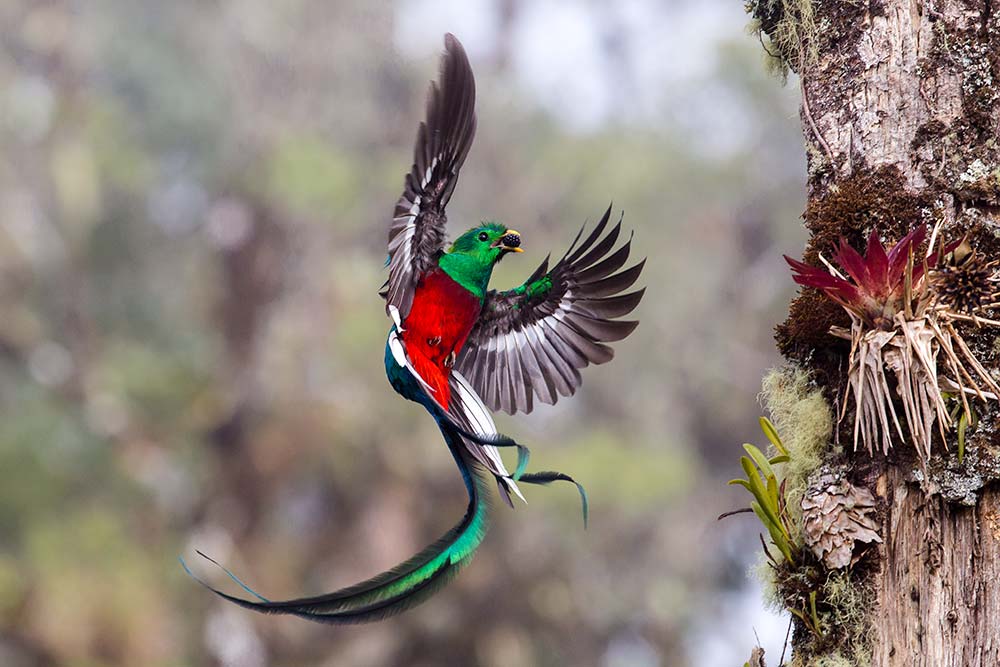
Tyohar watched the pair of resplendent quetzals from dawn to dusk for more than a week as they delivered fruits and the occasional insect or lizard to their two chicks. Resplendent quetzals usually nest in thicker forest, but this pair had picked a tree in a partly logged area in the Costa Rican cloud forest of San Gerardo de Dota. The additional light made it easier for Tyohar to catch the iridescent colour of the male’s dazzling emerald and crimson body plumage and tail streamers, despite his fast, erratic flight pattern.
Photograph: Tyohar Kastiel/Wildlife Photographer of the Year
Arctic treasure
Sergey Gorshkov, Russia
Finalist 2017, Animal Portraits
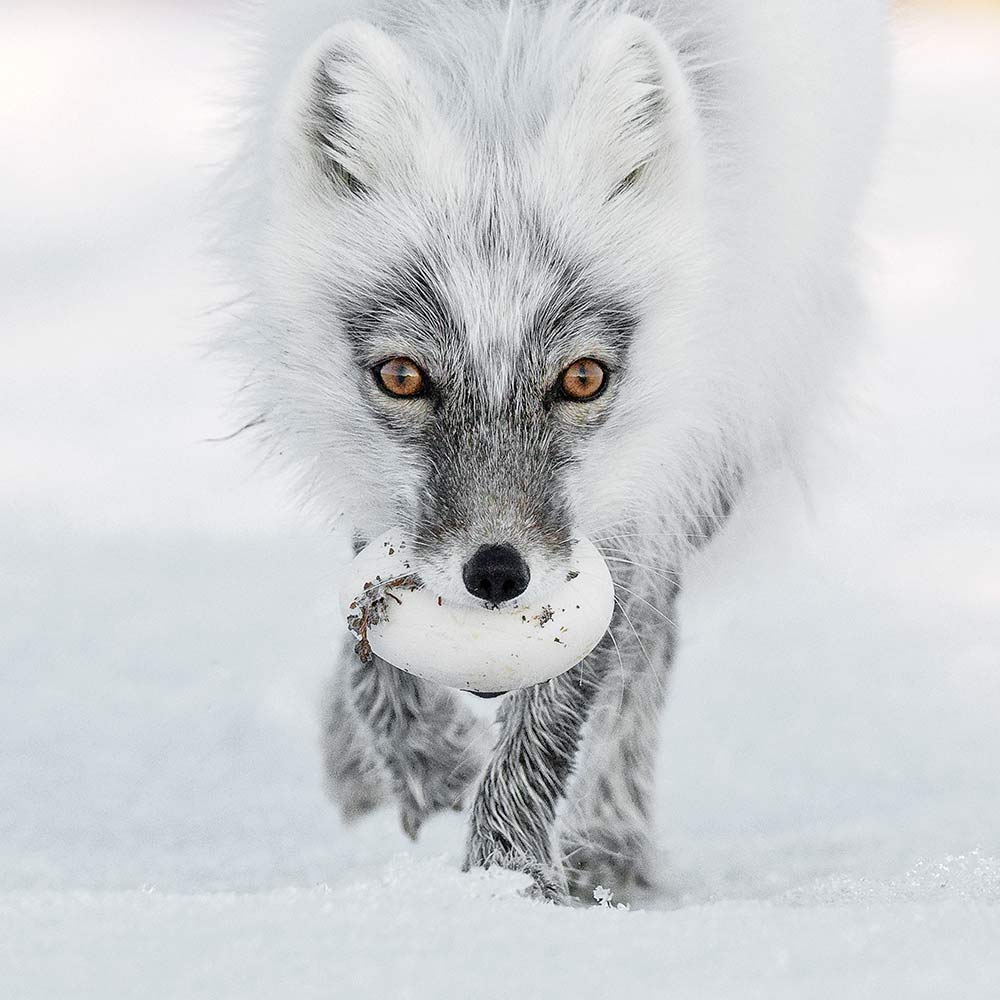
Carrying its trophy from a raid on a snow goose nest, an Arctic fox heads for a suitable burial spot. This is June and bonanza time for the foxes of Wrangel Island in the Russian Far East.
Photograph: Sergey Gorshkov/Wildlife Photographer of the Year
The power of the matriarch
David Lloyd, New Zealand/UK
Finalist 2017, Animal Portraits
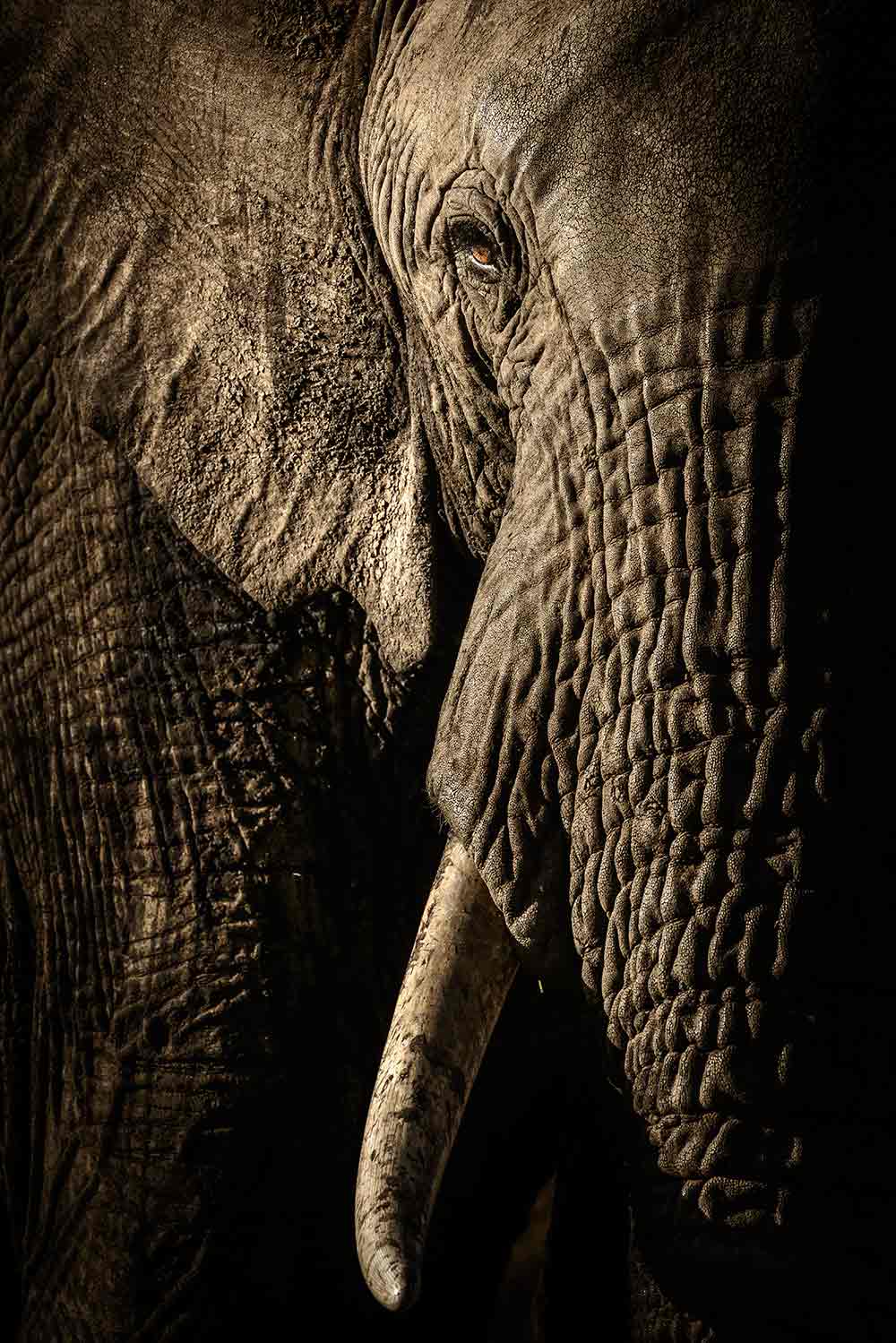
At dusk, in Kenya’s Maasai Mara National Reserve, David waited for the herd of elephants on their evening trek to a waterhole. As they got closer to his vehicle, he could see that the mellow light from the fast-setting sun was emphasizing every wrinkle and hair.
The elephants ambled by in near silence, peaceful and relaxed. The female leading the dozen-strong herd -- probably the matriarch -- looked straight at him, her eye a glowing amber dot in the heavy folds of skin. Her gaze was, he says, full of respect and intelligence -- the essence of sentience.
Photograph: David Lloyd/Wildlife Photographer of the Year
The insiders
Qing Lin, China
Finalist 2017, Under Water
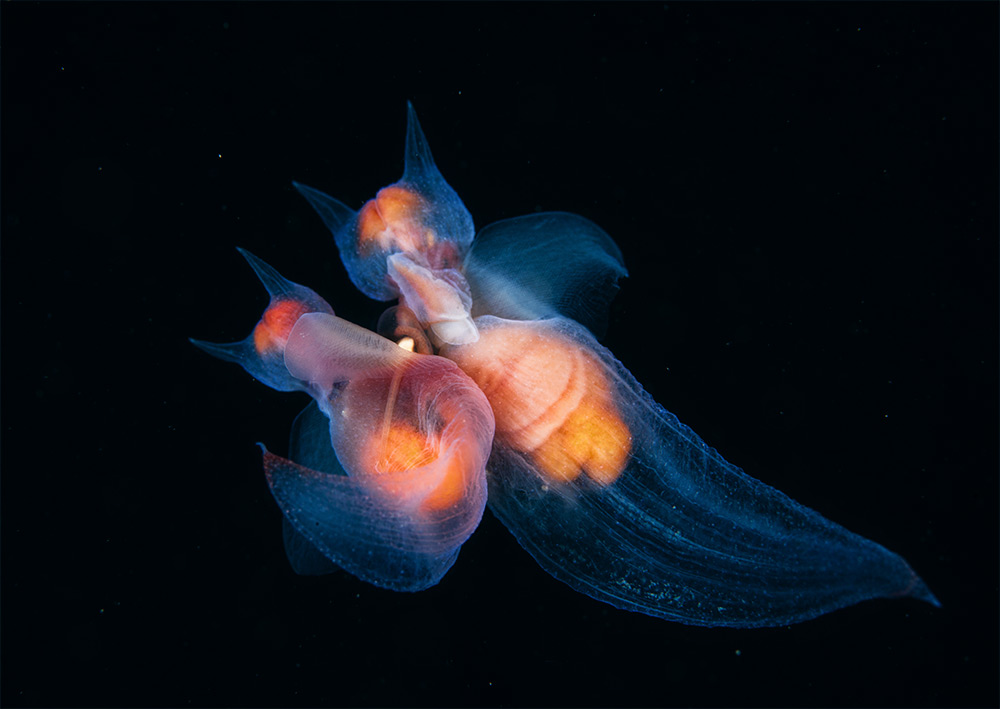
The bulbous tips of the aptly named magnificent anemone’s tentacles contain cells that sting most fish. But the clown anemonefish goes unharmed thanks to mucus secreted over its skin, which tricks the anemone into thinking it is brushing against itself. Both species benefit.
While diving in the Lembeh Strait in North Sulawesi, Indonesia, Qing noticed something strange about this particular cohabiting group. Each anemonefish had an extra pair of eyes inside its mouth -- those of a parasitic isopod (a crustacean related to woodlice). With great patience and a little luck -- the fish darted around unpredictably -- Qing captured these three rather curious individuals momentarily lined up, eyes front, mouths open and parasites peeping out.
Photograph: Qing Lin/Wildlife Photographer of the Year
Glimpse of a lynx
Laura Albiac Vilas, Spain
Finalist 2017, Young Wildlife Photographer of the Year, 11-14 Years

Laura had seen many of Spain’s wild animals, but never the illusive Iberian lynx, an endangered cat found only in two small populations in southern Spain. Laura’s family travelled to the Sierra de Andújar Natural Park in search of the lynx – and struck lucky on their second day – a pair were relaxing not far from the road. There were many photographers there but an atmosphere of 'respect’. 'The animals’ attitude surprised me. They weren’t scared of people – they simply ignored us,’ says Laura. 'I felt so emotional to be so close to them.’
Photograph: Laura Albiac Vilas/Wildlife Photographer of the Year
Saguaro twist
Jack Dykinga, USA
Finalist 2017, Plants and Fungi

A band of ancient giants commands the expansive arid landscape of Arizona’s Sonoran Desert National Monument in the US. These emblematic saguaro cacti -- up to 200 years old -- may tower at more than 12 metres (40 feet) but are very slow growing, some sprouting upwardly curved branches as they mature. The roots – aside from one deep tap – weave a maze just below the surface, radiating as far as the plant is tall, to absorb precious rainfall.
The surface pleats expand like accordions as the cactus swells, its burgeoning weight supported by woody ribs running along the folds. A lifetime of searching out victims near his desert home led Jack to know several that promised interesting compositions. 'This one allowed me to get right inside its limbs,’ he says. As the gentle dawn light bathed the saguaro’s contorted form, Jack’s wide angle revealed its furrowed arms, perfectly framing its neighbours before the distant Sand Tank Mountains.
Photograph: Jack Dykinga/Wildlife Photographer of the Year
Winter pause
Mats Andersson, Sweden
Finalist 2017, Black and White
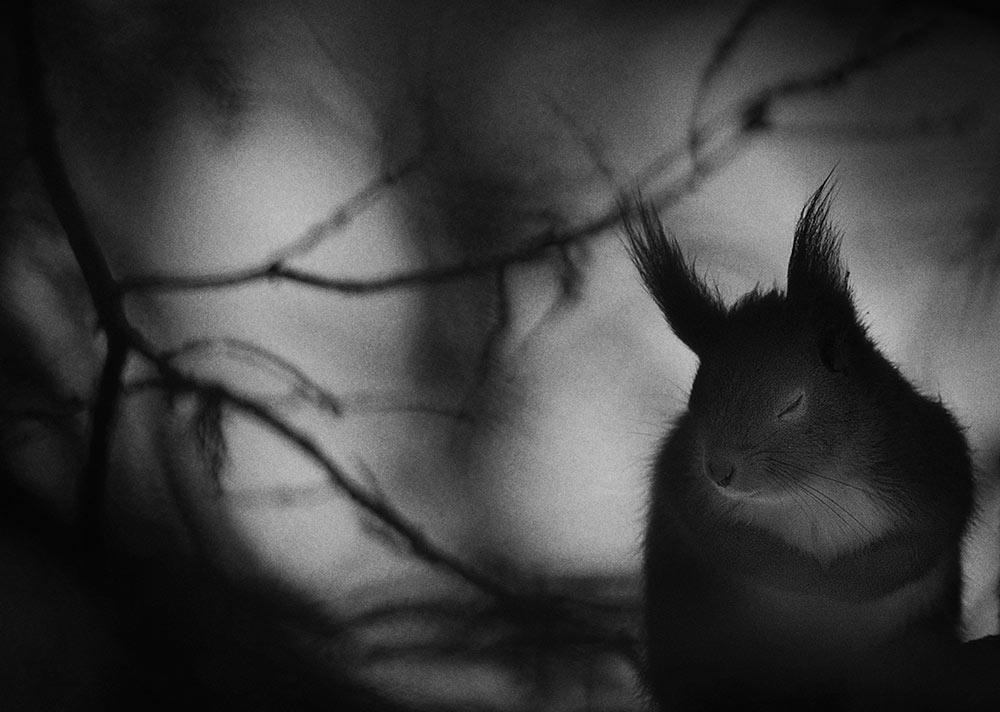
The red squirrel closed its eyes for just a moment, paws together, fur fluffed, then resumed its search for food. Winter is a tough time for northern animals. Mats walks every day in the forest near his home in southern Sweden, often stopping to watch the squirrels foraging in the spruce trees. Though their mainly vegetarian diet is varied, their winter survival is linked to a good crop of spruce cones, and they favour woodland with conifers. They also store food to help see them through lean times.
Photograph: Mats Andersson/Wildlife Photographer of the Year
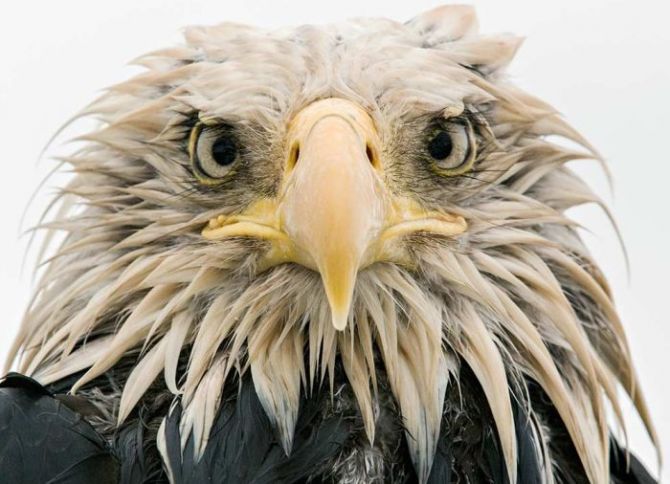











 © 2025
© 2025